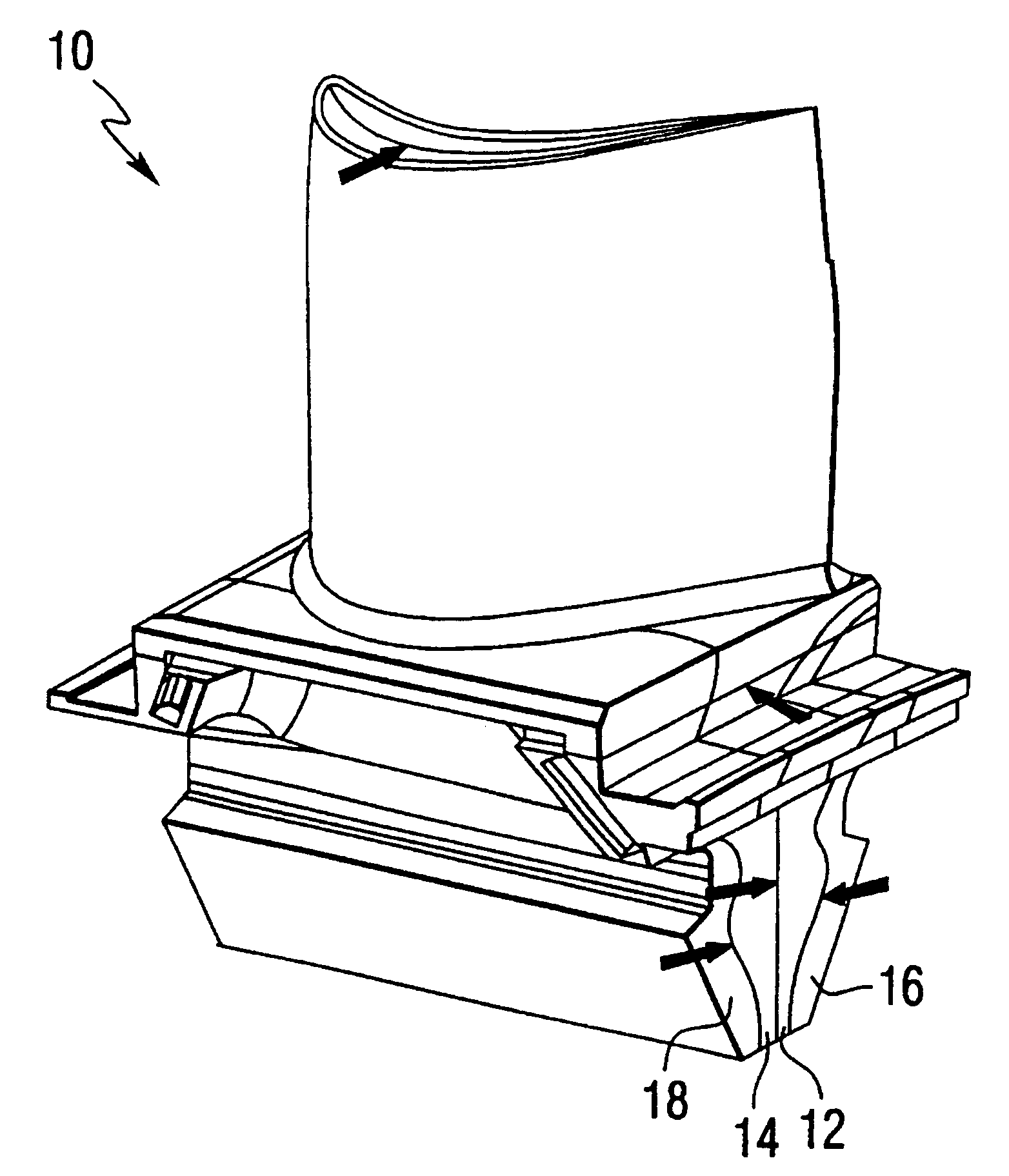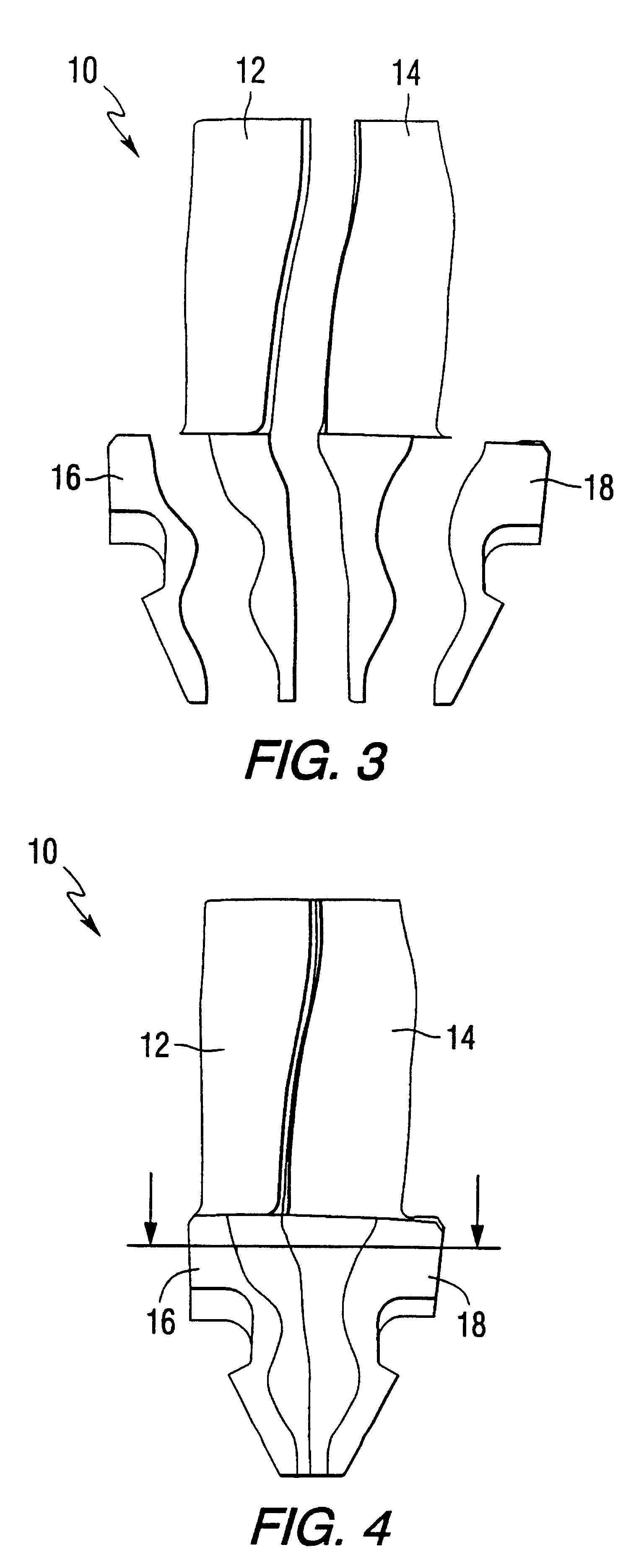Turbine blades made from multiple single crystal cast superalloy segments
- Summary
- Abstract
- Description
- Claims
- Application Information
AI Technical Summary
Benefits of technology
Problems solved by technology
Method used
Image
Examples
Embodiment Construction
The effect of bonding foil chemistry and thermal treatments on the microstructure and mechanical properties were assessed experimentally. Initially, several bonding foil chemistries and thermal processes were employed to generate samples for metallographic assessment. The processes that produced the most homogeneous chemistry and microstructure across the bond line and throughout the base metal were selected for further assessment by testing the tensile and creep properties.
A CMSX-4 base material was supplied in the as-cast conditions as single crystal slabs approximately 9.5.times.76.2.times.152.4 mm (0.375.times.3.times.6 inches). The bonding media were obtained as 50 .mu.m (0.002 inch) thick commercial bonding foils.
The boron levels of the bonding foils are actually B ranges since two of the foils were supplied in several forms with slightly different boron levels: Ni-Flex 110 was supplied with 1.3%, 1.7% and 2.5% B levels and Ni-Flex 120 was supplied with 1.5%, 1.7% and 1.9% B l...
PUM
| Property | Measurement | Unit |
|---|---|---|
| Fraction | aaaaa | aaaaa |
| Fraction | aaaaa | aaaaa |
| Percent by mass | aaaaa | aaaaa |
Abstract
Description
Claims
Application Information
 Login to View More
Login to View More - R&D
- Intellectual Property
- Life Sciences
- Materials
- Tech Scout
- Unparalleled Data Quality
- Higher Quality Content
- 60% Fewer Hallucinations
Browse by: Latest US Patents, China's latest patents, Technical Efficacy Thesaurus, Application Domain, Technology Topic, Popular Technical Reports.
© 2025 PatSnap. All rights reserved.Legal|Privacy policy|Modern Slavery Act Transparency Statement|Sitemap|About US| Contact US: help@patsnap.com



